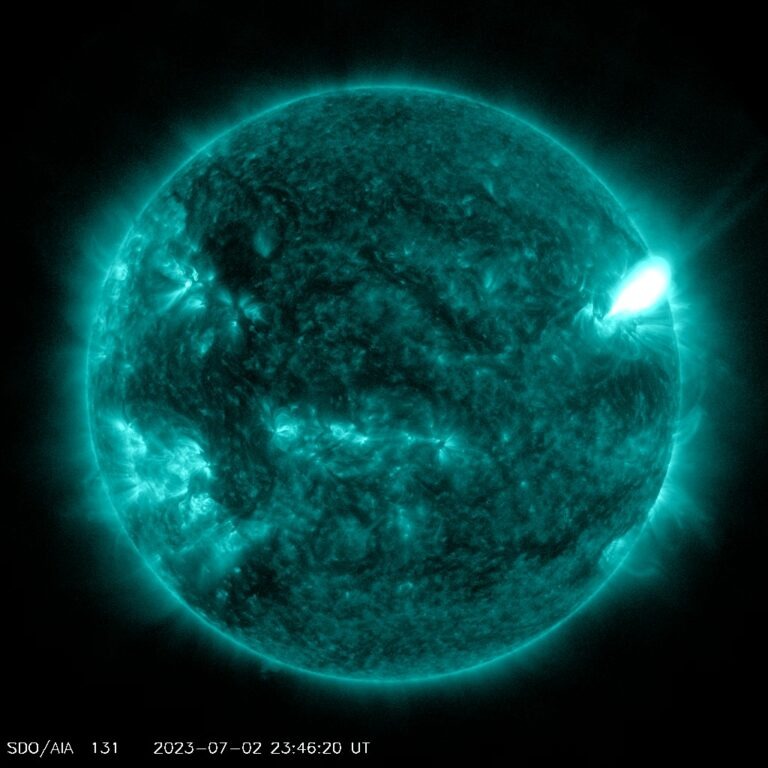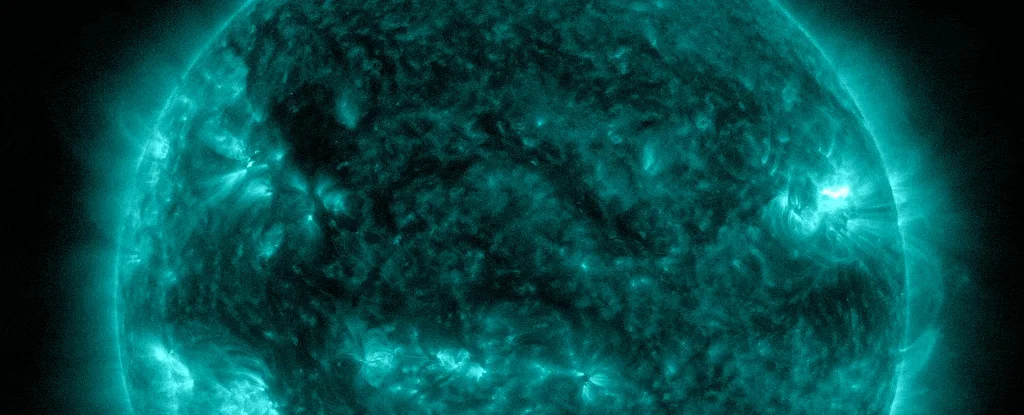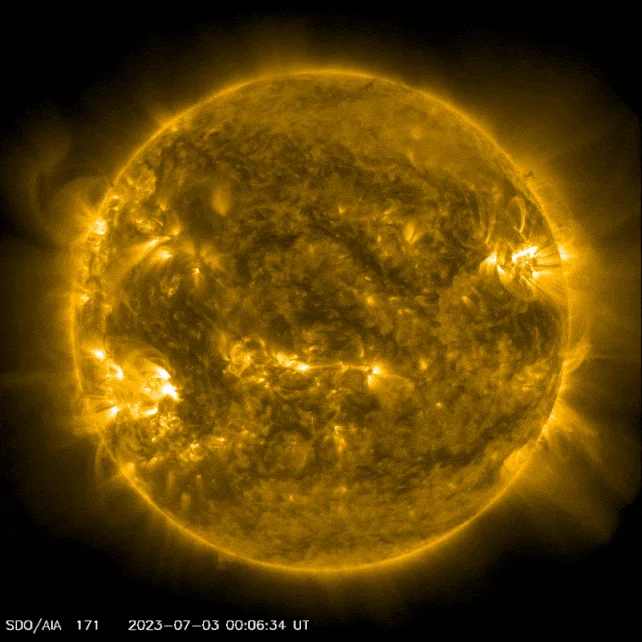Recently, a huge flare occurred on the Sun, which caused short-term but intense interference of radio signals in the western United States and in the Pacific Ocean as it passed through the upper layers of the Earth’s atmosphere.
On July 2, 2023, an active sunspot named AR 3354 caused an X1.0 class solar flare. The class X indicates the strongest flares, whereas the number gives more information about its strength. The strongest known flare in the history of X28 was recorded almost 20 years ago.

Despite the severity of the event, the impact on Earth was less than one would expect, as the flare ended quickly and did not provoke serious incidents. Astronomers have not noticed any signs of coronal mass ejection, which usually accompanies such events and leads to the release of plasma into space.

Solar flares and coronal mass ejections occur as a result of the rupture and reconnection of magnetic field lines, often in the areas of sunspots. This leads to a large release of energy, which manifests in the form of a solar flare. The more sunspots there are on the Sun, the more often such events occur.
Solar peak activity
This explosion corresponded to the activity of the current solar cycle; it indicates that several stormy months are coming before us, at a time when the Sun is approaching its 11-year peak of activity. Such activity is common for the Sun. Every 11 years it experiences periods of increasing and decreasing activity, which are called solar maximum and solar minimum. It is not known exactly what influences these cycles, but astronomers determine them based on the number of sunspots. This is due to the Sun’s magnetic field, which controls its activity, and sunspots are temporary areas with particularly strong magnetic fields.

The last solar minimum and the end of the 24th solar cycle were recorded in 2020. We are now in the 25th solar cycle, which will lead to peak activity around July 2025. However, this solar cycle is slightly different from what is expected, as NASA and NOAA assume that the peak of the cycle will be relatively calm, with about 115 sunspots during maximum solar activity. According to the Royal Observatory of Belgium, the number of sunspots already reached the maximum value for the last 21 years, and the average for June was 163 sunspots per day.
The strongest solar cycle in the entire history of observations occurred between 1954 and 1964. At its peak, a maximum of 285 sunspots were recorded.
Danger of strong flares
It is not entirely clear why the Sun has shown significantly more activity than the official forecasts predicted. Observations of the development of its activity can reveal more about what is happening inside the Sun — something that we do not have a clear idea about — allow us to better predict flares in the future.
This is important because, as the last flare showed, solar activity can affect us here on Earth. And not only in the form of interruptions of radio signals. A strong solar explosion can interfere with satellite communications, including navigation. It can lead to fluctuations in electrical networks and power outages. It can change the migratory behavior of animals.
In 1859, a coronal mass ejection led to a solar storm known as the Carrington event, which led to a catastrophic failure of telegraph systems. Since then, humanity has not recorded such powerful flares. But there is a high probability that a repeated powerful event on the Sun can change the world on Earth.
Earlier we reported on how a giant solar flare lit up the aurora borealis on Mars.
According to Science Alert
Follow us on Twitter to get the most interesting space news in time
https://twitter.com/ust_magazine
